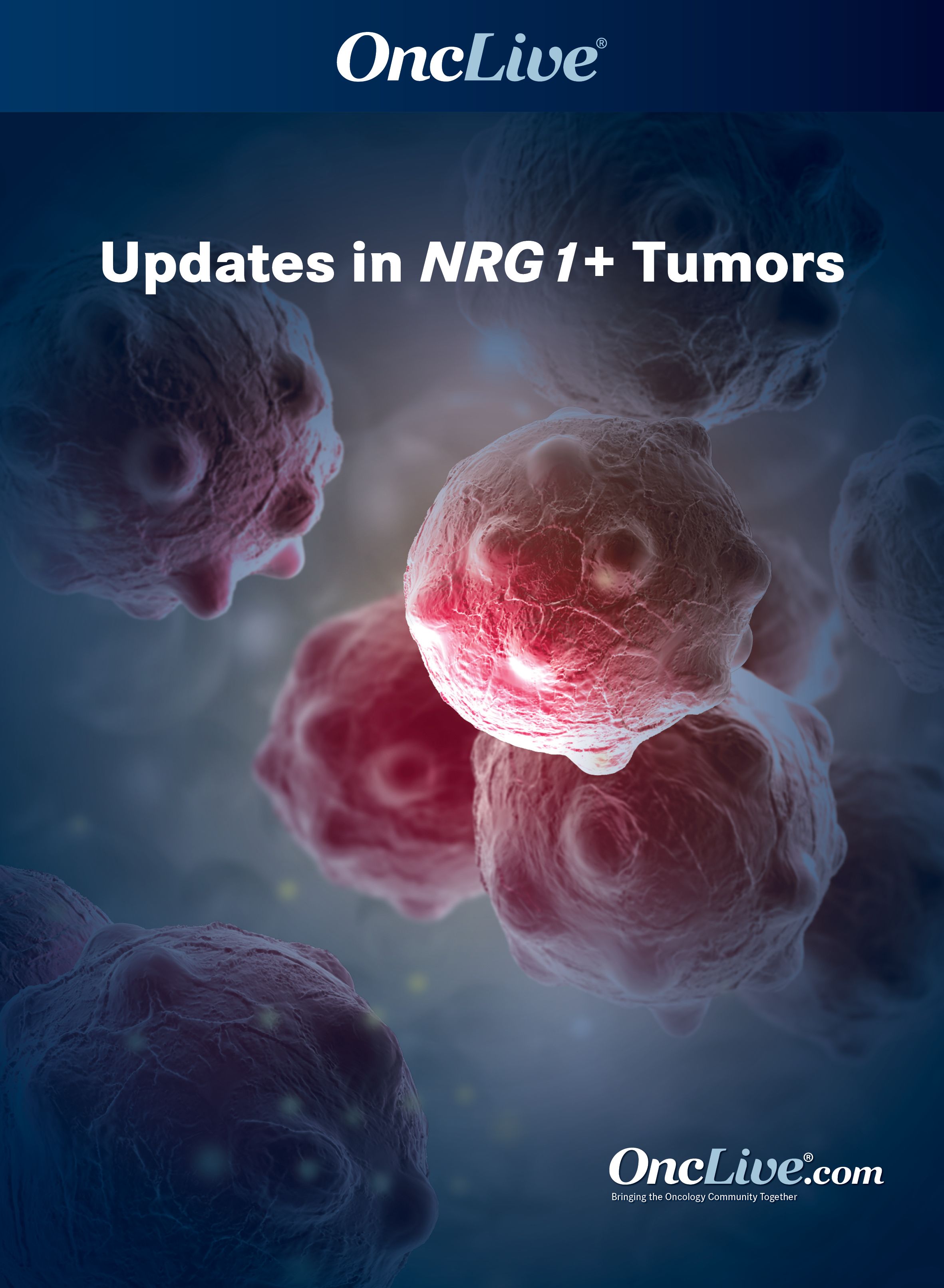CRESTONE Data Signal Positive Start to Treat Rare NRG1 Fusions in Solid Tumors
Results of the phase 2 CRESTONE study have demonstrated the tolerable safety profile and efficacy of seribantumab for the treatment adult patients with metastatic solid or locally advanced tumors harboring the rare NRG1 fusions.
Yasir Y. Elamin, MD

Results of the phase 2 CRESTONE study (NCT04383210) have demonstrated the tolerable safety profile and efficacy of seribantumab for the treatment adult patients with metastatic solid or locally advanced tumors harboring the rare NRG1 fusions. Initial findings were presented at the 2022 American Society of Clinical Oncology Annual Meeting.
In CRESTONE, the investigator-assessed objective response rate (ORR) with seribantumab for cohort 1 (n = 12) was 33% with 2 partial responses (PR) and 2 complete responses (CR). Among the patients in cohort 1, 11 had non–small cell lung cancer (NSCLC). The ORR for these patients was 36% and included 2 PRs and 2 CRs.
NGR1 fusions are found in 0.2% of all solid tumors and the oncolytic drivers associated overactivation of HER3. Seribantumab, an anti-HER3 monoclonal antibody, demonstrated preclinical activity NRG1 fusion-driven preclinical models.
Yasir Y. Elamin, MD, an assistant professor in the Department of Thoracic/Head and Neck Medical Oncology at The University of Texas MD Anderson Cancer Center in Houston, Texas said, “[The data] are an important finding, but we must be conscious that the numbers are limited. This analysis was only done on 12 patients so I would like to see more numbers.”
In an interview with OncologyLive®, Elamin discussed how the early data support further investigation of seribantumab, which is especially important as there are no current approved targeted therapies for patients with NRG1 fusions.
Please describe the background on NRG1 fusions and solid tumors and the practice for detecting these fusions.
NRG1 fusions result from the fusion of the NRG1 gene with another partner gene. They are very rare, and the overall [incidence] is 0.2% in all solid tumors, but they are enriched in adenocarcinoma for lung which is also rare to begin with. It’s also enriched in KRAS wild-type adenocarcinoma of the pancreas.
The NRG1 protein binds to the healthy protein on the surface of the cancer cell, activating downstream signaling, so it does activate the PI3K pathway, the MAPK pathway, and so forth. Given how rare this fusion is, it’s [recently] become a focus of extensive clinical research and preclinical research. What we can tell based on some limited retrospective studies is that patients with NRG1 fusions may not be very responsive to chemotherapy or immunotherapy. Therefore, the treatment options in the metastatic setting are limited.
The best way to test for an NRG1 fusion would be to use an RNA-based sequencing platform because the intronic region in the fused gene is quite large, so, it is much easier to detect.
What makes seribantumab unique from other agents in this space?
There are [other] pan-ERBB inhibitors, such as tyrosine kinase inhibitors, which would inhibit the entire HER family. One of them that’s already commercially available is afatinib (Gilotrif), although it is not approved specifically for NRG1 fusions.
Seribantumab is a fully humanized monoclonal antibody that binds to HER3 on the cell surface and it essentially competes with NRG1. By doing that, it prevents the diagonalization of HER3 and other HER family members and it will suppress the activation of downstream signaling. Monoclonal antibodies target HER3 and HER2 when they treat NRG1-positive tumors.
What inspired the launch of the CRESTONE study? And what are the key objectives of the research?
The overall goal of the study is to provide patients with NRG1 fusion–positive tumors with treatment options. We don’t have any FDA-approved targeted drugs for patients with NRG1 fusions and the promise of targeted therapy has been well established across solid tumors. These therapies are typically effective, have less adverse event [AE], and patients treated with targeted therapy, in most cases, have better quality of life.
The primary end point of the phase 2 portion of the study is to establish the ORR in 3 different cohorts. The first cohort [includes] patients with NRG1 fusions who were not treated with HER3 targeted therapy or pan-ERBB targeted therapy, and who have their NRG1 fusions centrally confirmed. Then there is a second cohort for patients who have been treated in the past with HER3 targeted therapy, or a pan-ERBB inhibitor. And finally, cohort 3 [includes] patients who don’t fit in cohort 1 and cohort 2, and these are mostly patients who lack the EGF-like domain of the NRG1 fusion protein.
There are a number of secondary end points including safety, progression-free survival, duration of response, and so forth. The key thing is that all patients with NRG1 fusion–positive solid tumors.
What were the efficacy findings reported with this agent?
The efficacy that was reported was from cohort 1, which is, again, focused on patients who had no prior ERBB-directed [therapy]. The number of [patients and] what was reported was small, but the data are very encouraging. In this cohort, the efficacy [data included] 12 patients, and 4 of these 12 patients had response [for a] response rate of 33% and of these 2 were complete responses and 2 partial responses. If you look specifically at patients who [had] NCSLC, the overall response rate was 36%. The disease control rate in patients in cohort 1 was 92%.
I think it’s an important finding, but we must be conscious that the numbers are limited. The critical question here is around the efficacy: Is the drug going to be active in all fusion partners? Based on the initial data that we have seen, it [appears] that the fusion partner does not impact the efficacy in a negative way.
Generally speaking, the agent was safe and that is evident because we did not see any patients who discontinued service [because of] an AE. The vast majority of AEs were grade 1 or grade 2.
What were the takeaways from this trial?
[The data] reinforce the utmost importance of genetic testing, especially in the context of lung cancer. I think it is important to do genetic testing, because it does impact clinical decision, outcomes, and survival. For NRG1you could miss it if you use the DNA-based [next-generation sequencing]. If you used an RNA -based test, I think that would be the gold standard way of detecting this.
These data that we’ve seen warrant further clinical development of this drug in solid tumors with an NRG1fusion. We need more targeted therapies for patients and the promise of targeted therapy is real.
Reference
- Carrizosa DR, Burkard ME, Elamin YY, et al. CRESTONE: initial efficacy and safety of seribantumab in solid tumors harboring NRG1 fusions. J Clin Oncol. 2022;40(suppl 16):3006. doi:10.1200/JCO.2022.40.16_suppl.3006




